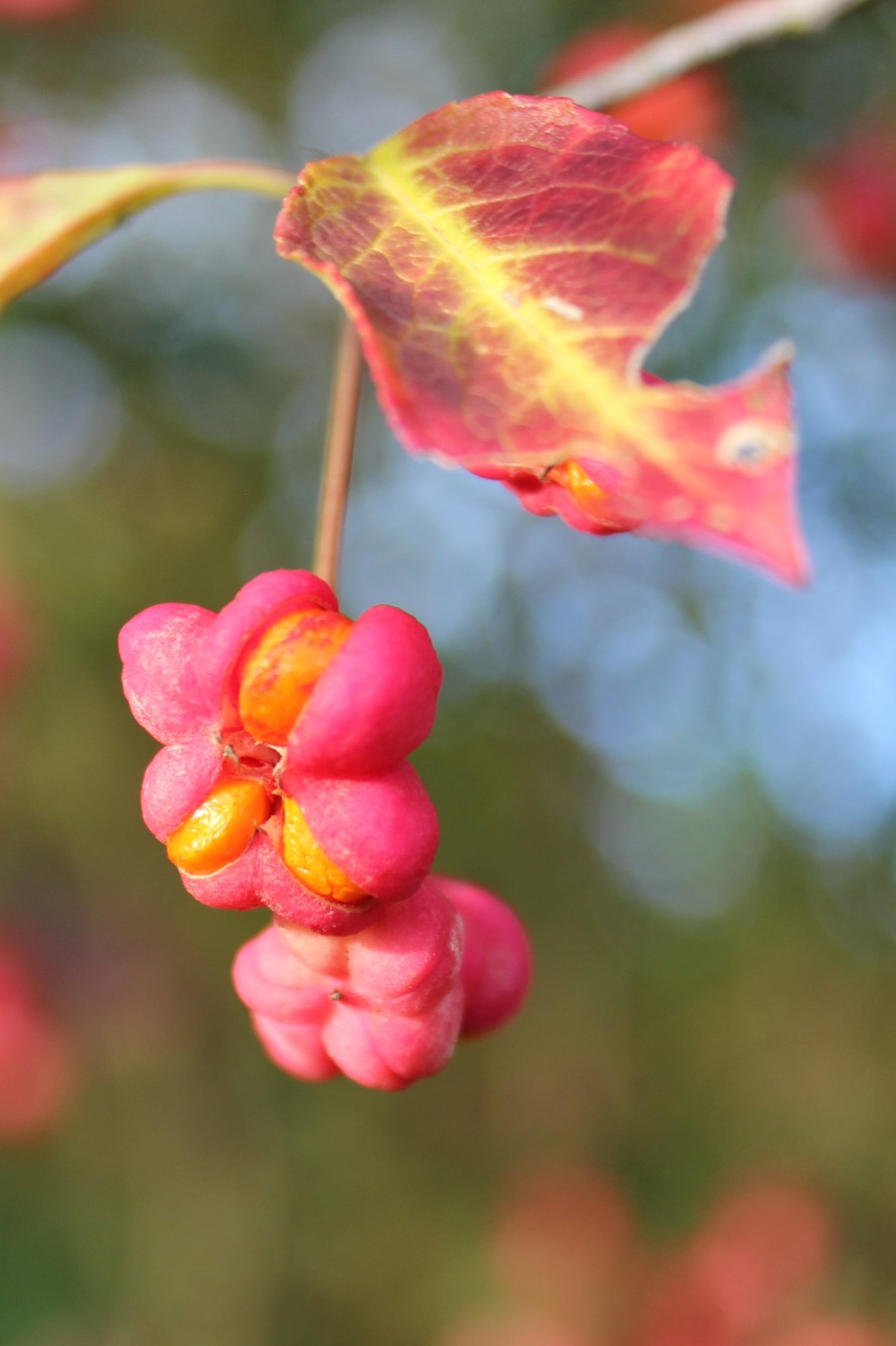The sun’s arc is sinking lower, and the days are shortening but nature is still delivering its surprises.
It is now mid-autumn and seasonal gales have cast the remaining leaves to the ground. Whilst out walking alongside a small woodland, I notice some fine crimson leaves and the familiar pink haze of a spindle tree shimmering against the crisp blueness of an autumnal sky.
Up close, my eyes delight on the zingy orange berries that burst out from their lipstick- pink pods; tiny baubles that dangle from the spindle’s thin branches, bringing a burst of colour to this weather-torn hedge land.
If not subjected to annual cutting by a mechanical flail, a spindle tree, such as this one, can live for over 100 years and grow 9m tall. The straight and strong pale wood that it produces was once used for making the spindles that spun and wound the thread from wool, giving the plant its common name. They are found throughout Europe and typically along the margins of ancient woodland. I barely regard them all year, even their pretty white star-shaped flowers in Spring can go unnoticed. It is only now in their late November colours that they steal the show.
Yet it is a hedgerow tree that I hold very dear. I still recall my childhood excitement when I first encountered the spindle’s exotic fruits. My father collected the seeds and grew them in his Dartmoor garden. Long after his death, his spindle tree continued to flourish and with it, all the wildlife that it attracted: holly blue butterflies, ermine moths, ladybirds and lacewings. Although all parts of the spindle tree are toxic for humans, (like poor Sleeping Beauty who pricked her finger on a spindle), they provide important winter food for birds, mice and even foxes. It was mostly the robins I remember though. They would lay their claim and fiercely defend the berries. Robins, it turns out, are fundamental to the distribution of this native plant.
As I wander on, I eventually remember Euonymus europaea, the botanical name for a spindle tree, based upon ‘eu’ the Greek prefix for ‘good’. In Celtic folklore, spindle is known as ‘the lucky tree’. I certainly feel blessed seeing it today; the bright orange seeds for my own garden clasped tightly in my hand feel as precious as jewels sent by my father from some far away shore.



